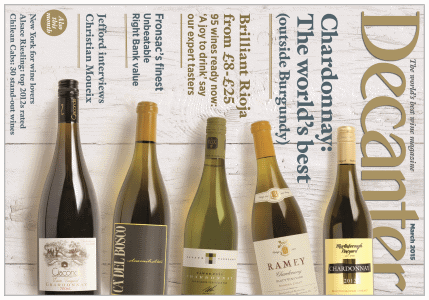Two extraordinary Chardonnays
The big news this year is all about two wonderful vintages of Chardonnay, being the 2010 and 2011. As I mentioned in the tasting notes, the 2010 Chardonnay is the first to be completely fermented and aged in our underground maturation cave. I am beginning to see a real difference in the wines that have been fermented in the cave. They seem to sail through almost two years of barrel age retaining beautiful freshness and vibrancy. With humidity always over 90 percent and a relatively constant temperature of 15 degrees we are finding the ageing process is now much slower and more gentle – under these conditions the wines tend to lose a small amount of alcohol and gain further refinement, rather than gaining alcohol as they do in a less humid cellar.
The 2011 vintage was one of the coolest for many seasons with much higher than average rainfall thrown in for good measure. Due to the challenging conditions many regions had high losses due to Downy Mildew and Botrytis. While we also had our fair share of these conditions, careful vineyard work enabled us to keep this mostly under control. This season has resulted in exceptionally fine wines though they have still retained good depth and complexity. The only disappointment was Pinot Noir and the 2011 may be offered under our McClay Road label at a later stage, depending on how this wine develops in barrel.
The Shirazes have lived up to expectations, in fact the 2010 Estate Vineyard Shiraz has continued to improve in terms of complexity as this vineyard becomes more established. While the cooler 2011 vintage has resulted in a finer structure at this stage I expect that by this time next year they will have richened and deepened considerably.
2011 will be the first vintage to show the results of some improvements in our red winemaking techniques. Without going into great detail this includes a little more use of whole bunch fermentation in some cases. This will be further enhanced in the upcoming vintage with the replacement of some of our winery processing equipment - with the very latest machinery developed in Narbonne, Southern France.
For those of you who are Pinot Noir fans, our new small planting of MV6 Pinot Noir vines is progressing well. This planting will help boost our production slightly and hopefully bring an extra dimension to this wine within the next few years.
Many of you will have seen reviews of our wines in the March and November issues of Decanter Magazine this year. We were very pleased to receive a top equal rating for the Estate Vineyard Chardonnay in what was a very comprehensive tasting of 116 wines! The Warner Vineyard Shiraz also ranked well and we noted this as the top cool climate Shiraz with a total of 256 wines being tasted. If you have not already seen these issues I recommend them as very interesting reading.
Some of my comments in the most recent issue of Decanter discuss various aspects of the Australian wine industry and Australian wine styles. Although they will have been considered controversial by some I'm glad they have found resonance with most of you.
Regards,
Rick Kinzbrunner


Back to the future for Giaconda's Pinot Noir
30 April 2015A decade or so ago Rick Kinzbrunner was dismayed at the quality of the pinot noir he was producing from his Giaconda vineyard near Beechworth. So dismayed that this figurehead of the Beechworth wine industry actually made several pinots between 2008 and 2012 in which Yarra Valley fruit from the Toolangi Vineyard (for whom he makes its Reserve Chardonnay) was the dominant fraction. This despite the still memorable qualities of estate-grown pinot noir vintages such as 1989, 1991 and 1992, not to mention the first-ever Giaconda wine I tasted, the 1988. I remember this wine as if I tasted it an hour ago. I was with my father, who was equally seduced, and I was immediately convinced Kinzbrunner was a genius.
I’ve just had rather a profound flashback to that very moment, 25 years or so ago. Why? I ripped the top from the 2013 Giaconda Pinot Noir, a wine that is again 100% estate-grown but which is taken from relatively recent plantings at a significantly higher – and therefore cooler – location at the Giaconda site. Here’s a truly stellar pinot noir, but one that talks its site as much as its variety. Having followed the 1989 very closely – and this is the vintage the 2013 most resembles – I speak with genuine confidence that this wine will age superbly, for the long term. It will become more complex and ethereal – which it is already to an extent – and will become firstly more powerful and then more delicate. It will remain elegant and savoury, will retain its effortless natural balance and freshness, and will please many a Burgundian collector, not just because it will age into something more Burgundian than many a Burgundy.
If you have the chance to taste this wine, do so. It has an Old Worldliness and a reserve that takes my breath away. For me it ticks the most important boxes: it’s about the place, the vintage and the maker. And most importantly, no other maker in the world could have created it. I hope Kinzbrunner is as satisfied as I am with his latest creation.
Jeremy Oliver
https://www.jeremyoliver.com